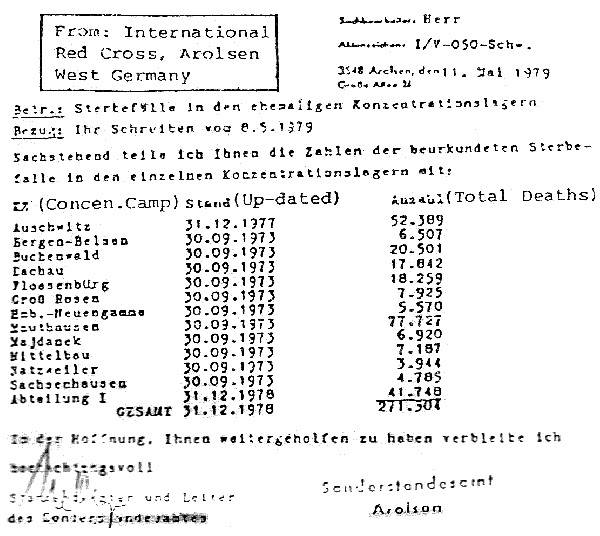
Author: Webb
Magically efficient Nazi pneumonia
Found in: Sophie’s Choice, by William Styron. London: Cape, 1979.
“The Russians were coming [toward Auschwitz/Birkenau] and the SS wanted the children destroyed. Most of them were Polish; the Jewish children were already dead. They thought of burning them alive in a pit, or shooting them, but they decided to do something that wouldn’t show too many marks and evidence. So in the freezing cold they marched the children down to the river and made them take off their clothes and soak them in the water as if they were washing them, and then made them put on these wet clothes again. Then they marched them back to the area in front of the barracks where they had been living and had a roll call. Standing in their wet clothes. The roll call lasted for many, many hours while the children stood wet and freezing and night came. All of the children died of being exposed that day. They died of exposure and pneumonia, very fast.”
Details about a human soap factory
That day the blinding artificial lights were turned off in the courtroom, plunging it almost into darkness. In the wavering dim light the witness-box was occupied by corpses … Continue reading
German Corpse Factories
Even the most popular atrocity story of all — the German corpse factory — turned out to be another war correspondents’ invention. This particular story had a long and highly successful run. It had several variations, but basically it was that close behind their front line the Germans had established factories for boiling down the corpses of their soldiers, from which to distill glycerine for munitions. The Times initiated the story, on April 16, 1917, with a suspiciously vague paragraph that said baldly: “One of the United States consuls, on leaving Germany in February, stated in Switzerland that the Germans were distilling glycerine from the bodies of their dead.” The account quickly blossomed. The Times expanded the original report by reproducing a dispatch by a German correspondent, Karl Rosner, in which he referred to the German army’s Kadaververwertungsanstalt, which The Times translated as “Corpse Exploitation Establishment.” Foreign newspapers picked up the story. It appeared in LInde’pendance and La Belge, two Belgian newspapers published in France and Holland. French correspondents were instructed by their army authorities to send dispatches to their newspapers over their own signatures detailing what was known about the corpse factories. The matter came up in the House of Commons on April 30, when the Prime Minister was asked if he would make the story known as widely as possible in Egypt, India, and the East generally. A corpse-factory cartoon appeared iii Punch, and in general the affair had world-wide circulation and considerable propaganda value.
Geysers of blood at Babi Yar
How many Jews were killed at Babi Yar? Exact estimates are hard to come by. Some say seventy thousand, others a hundred and fifty thousand […]
Eyewitnesses say that for months after the killing the ground continued to spurt geysers of blood.
Breathing through keyholes in the Flossenburg gas chamber
“I stayed in the hospital [At the Flossenburg camp] for three days and had good food and a rest. The S.S. would come in twice a day and take away some men. A few times they would come past my bed, but they would take the man next to me. Then one evening, a lot of S.S. walked into the room and they ordered us to follow them. They ordered us into a room and locked the door. I heard a noise like a snake hissing, and then I heard the slave laborers shouting, “They are gassing us!” I smelled an awful odor. Some of the men dropped dead. The rest of us ran around the room cursing the Nazis.
I couldn’t take it much longer and ran to the door and took hold of the knob and tried to open it. The door was locked. The smell of the gas got stronger. I coughed, and choked, and put my face to the keyhole and kept inhaling a little air from the outside.
We had been in the room for about five minutes when I heard them outside the door talking in German. “Let’s see if some of them are still alive.” I went away from the keyhole and the door opened. For some reason which I could never figure out, God had saved me from the gas chamber. The S.S. shouted for us to go out. There were only five of us still alive; sixty lay behind, dead.
As soon as we came outside and breathed the fresh air, the S.S. started to beat us. They chased us to a railroad station into boxcars and closed the doors on us. In the boxcar I lay down on the floor. I was bewildered. I couldn’t figure it out. Why hadn’t the S.S. murderers finished the job in the gas room? No, I couldn’t figure these things out”.
Source: ‘Death Was Our Destiny’, p. 49-50, by Arnold Friedman, Vantage Press, 1972.
Webmaster note: Pretty clever of the S.S. to allow Friedman to recuperate in the hospital for days before gassing him. It was also nice of the S.S. to allow the condemned room to walk and run around inside the gas chamber. Now we just need to find a gas chamber at Flossenburg that has five keyholes with a bunch of lip marks on them.
Toxicity of Diesel Exhaust
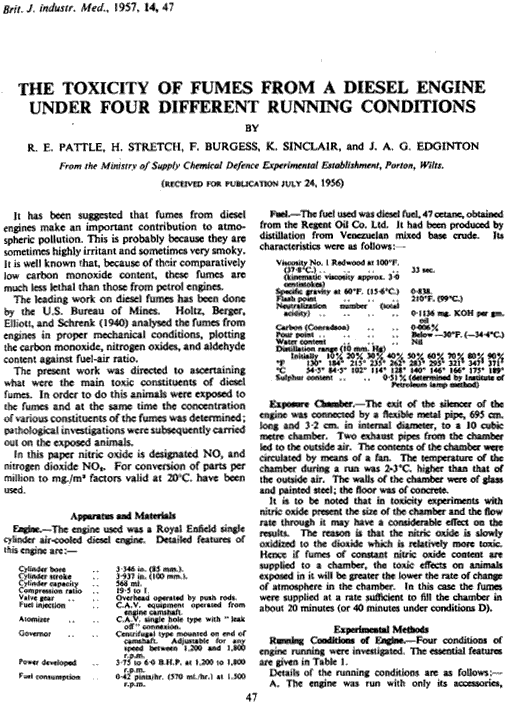
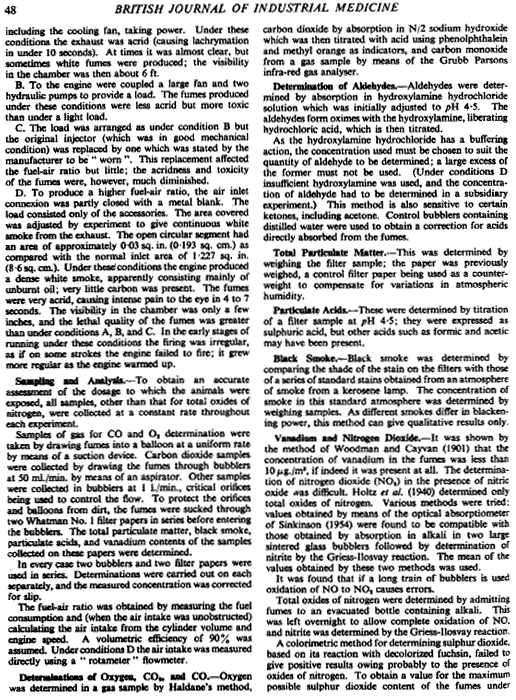
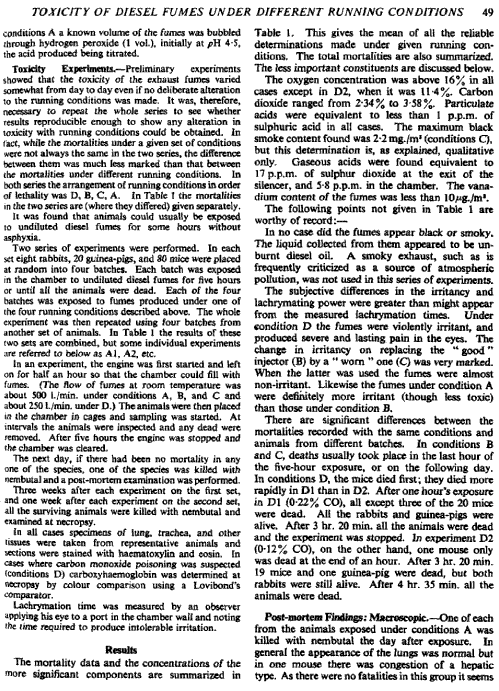
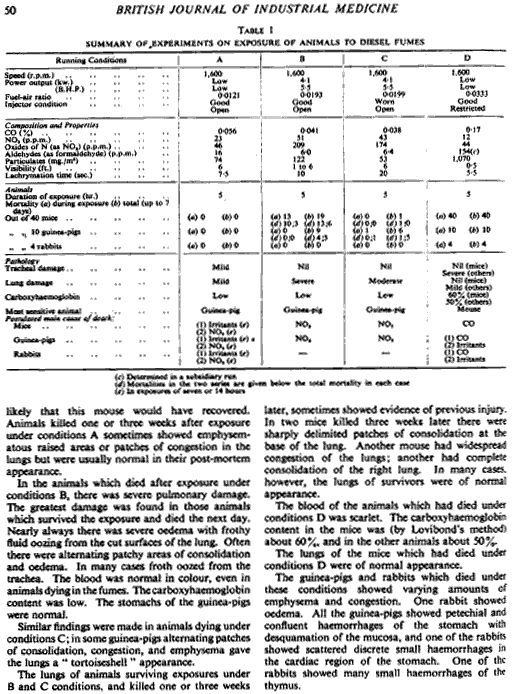
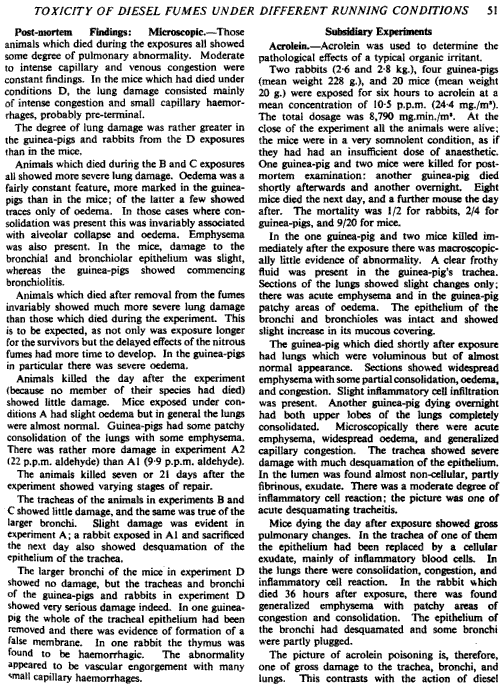
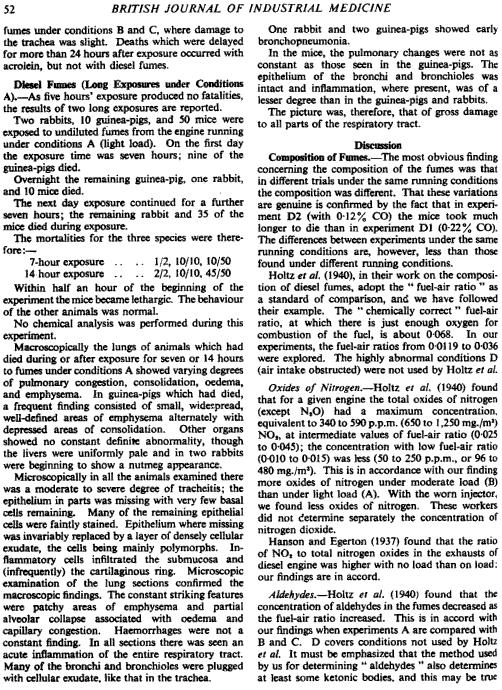
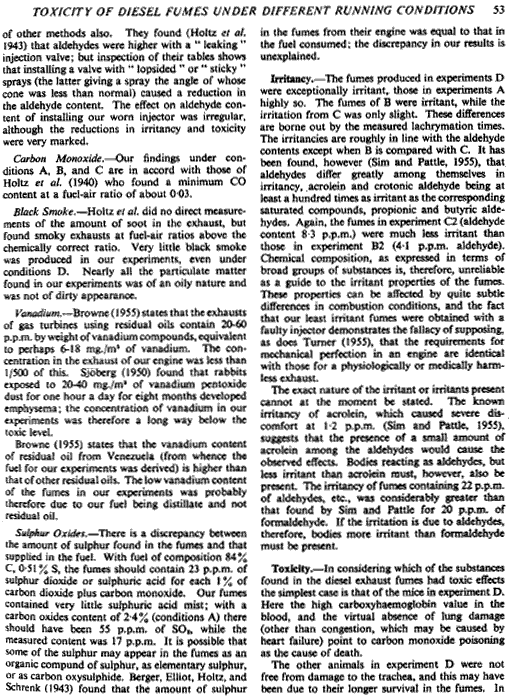
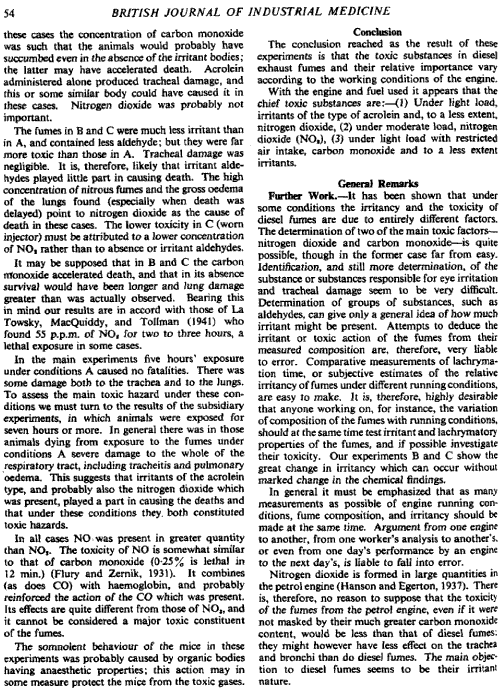
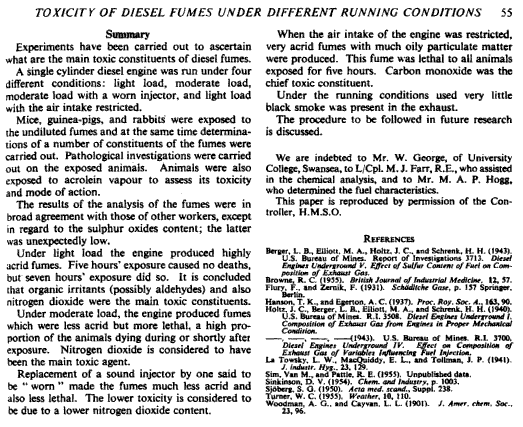
American Atrocities in Germany
By JUDGE EDWARD L VAN RODEN
From The Progressive, February 1949, p. 21f
AMERICAN investigators at the U. S. Court in Dachau, Germany, used the following methods to obtain confessions: Beatings and brutal kickings. Knocking out teeth and breaking jaws. Mock trials. Solitary confinement. Posturing as priests. Very limited rations. Spiritual deprivation. Promises of acquittal. Complaints concerning these third degree methods were received by Secretary of the Army Kenneth Royall last Spring [1948]. Royall appointed Justice Gordon Simpson of the Texas Supreme Court and me to go to Germany and check up on the reports. Accompanied by Lt. Col. Charles Lawrence, Jr., we went to Munich, Germany, set up offices there, and heard a stream of testimony about the way in which American atrocities were committed.
But first, a bit of the background. Last Spring the Supreme Court refused the habeas corpus petition of Col. Willis N. Everett, Jr., an American lawyer, who had served as defense counsel for the 74 Germans accused in the famous Malmedy case. Everett is a very able lawyer, a conscientious and sincere gentleman. He is not a fanatic.
In his petition, Everett charged that the Germans had not received a fair trial. Everett did not claim that all the German defendants were innocent, but since they did not have a fair trial, there was no way of telling the innocent from the guilty.
The tragedy is that so many of us Americans, having fought and won the war with so much sweat and blood, now say, “All Germans should be punished.” We won the war, but some of us want to go on killing. That seems to me wicked.
If Everett’s shocking charges were true, they would be a blot on the American conscience for eternity. The fact that there were atrocities by the Germans during the war against Americans, or by Americans against Germans, would not in the least lessen our disgrace if such peacetime atrocities were to go unchallenged.
Our specific assignment was not only to examine Col. Everett’s charges, but also to examine the cases of the 139 death sentences, which at that time remained unexecuted: 152 Germans had already been executed.
The 139 doomed men who were still alive fell into three groups. They were accused of involvement in the Dachau concentration camp crimes, in the killing of American fliers, or in the Malmedy massacres. Let me say that I believe the crimes for which these Germans were tried actually took place, and that some Germans were guilty of them.
But we should not let the indiscriminate hate of all Germans that was generated during and after the war, blind us to the necessity of punishing the guilty ones only.
After this investigation, and after talking to all sides, I do not believe that the German people knew what the German Government was doing. I am convinced the German populace had no idea what diabolical crimes that arch-fiend, [Heinrich] Himmler, was committing in the concentration camps. From the atrocities we learned about, he must have been the very prince of devils.
But as for the Germans at large, they fought the war as loyal citizens with a fatherland to support, and a fatherland to defend.
Some American fliers, shot down on bombing raids over Germany, were killed by German civilians.
These Germans felt that the American fliers were the murderers of their defenseless wives, mothers, and children who were in the bombed cities, just as the English felt that German fliers were their murderers. That’s war.
I felt deeply about these fliers. I had two sons in the Air Force. Jimmy made 35 missions over Germany and returned safe, thank God! Dick made 32 Missions and was finally shot down over Italy. He spent 12 months in a German prisoner-of-war camp and was fairly well treated. He is now in a sanitarium in Arizona recovering from TB he contracted in the camp.
II
The Malmedy massacres, in which a group of American prisoners of war were mown down after being captured during the Battle of the Bulge, actually happened. But can’t we distinguish between the assertion that these atrocities did happen, and the assertion that they were committed by these 74 Germans who had been in or near Malmedy at that time?
Because some wicked sadistic German individuals did it, are we doing the right thing by saying any and all Germans we lay our hands on are guilty and should be destroyed? I personally don’t believe that. That’s not the way of thinking I learnt in my church, or you learned in your church.
On Russian insistence, the Americans couldn’t retry these men. The Russian philosophy in these matters is that the investigators determine the guilt or innocence of the accused, and the judge merely sets the sentence. We accepted the Russian formula of no-retrial, but we won out on the presumption of innocence before trial.
The American prohibition of hear-say evidence had been suspended. Second and third-hand testimony was admitted, although the Judge Advocate General warned against the value of hearsay evidence, especially when it was obtained, as this was, two or three years after the act. Lt. Col. Ellis and Lt Perl of the Prosecution pleaded that it was difficult to obtain competent evidence. Perl told the court, “We had a tough case to crack and we had to use persuasive methods.” He admitted to the court that the persuasive methods included various “expedients, including some violence and mock trials.” He further told the court that the cases rested on statements obtained by such methods.
The statements which were admitted as evidence were obtained from men who had first been kept in solitary confinement for three, four, and, five months. They were confined between four walls, with no windows, and no opportunity of exercise. Two meals a day were shoved in to them through a slot in the door. They were not allowed to talk to anyone. They had no communication with their families or any minister or priest during that time.
This solitary confinement proved sufficient in itself in some cases to persuade the Germans to sign prepared statements. These statements not only involved the signer, but often would involve other defendants
III
Our investigators would put a black hood over the accused’s head and then punch him in the face with brass knuckles, kick him, and beat him with rubber hose. Many of the German defendants had teeth knocked out. Some had their jaws broken.
All but two of the Germans, in the 139 cases we investigated, had been kicked in the testicles beyond repair. This was Standard Operating Procedure with American investigators.
Perl admitted use of mock trials and persuasive methods including violence and said the court was free to decide the weight to be attached to evidence thus received. But it all went in.
One 18 year old defendant, after a series of beatings, was writing a statement being dictated to him. When they reached the 16th page, the boy was locked up for the night. In the early morning, Germans in nearby cells heard him muttering. “I will not utter another lie.” When the jailer came in later to get him to finish his false statement, he found the German hanging from a cell bar, dead. However the statement that the German had hanged himself to escape signing was offered and received in evidence in the trial of the others.
Sometimes a prisoner who refused to sign was led into a dimly lit room, where a group of civilian investigators, wearing U. S. Army uniforms. were seated around a black table with a crucifix in the center and two candles burning, one on each aide. “You will now have your American trial,” the defendant was told.
The sham court passed a sham sentence of death. Then the accused was told, “You will hang in a few days, as soon as the general approves this sentence: but in the meantime sign this confession and we can get you acquitted.” Some still wouldn’t sign.
We were shocked by the crucifix being used so mockingly.
In another case, a bogus Catholic priest (actually an investigator) entered the cell of one of the defendants, heard his confession, gave him absolution, and then gave him a little friendly tip: “Sign whatever the investigators ask you to sign. It will get you your freedom. Even though it’s false, I can give you absolution now in advance for the lie you’d tell.”
Our final report on these trials has been turned over to Secretary of the Army Royall. In spite of the many instances like those I have described. we found no general conspiracy to obtain evidence improperly. With the exception of 29 cases, we saw no reason why the executions should not be carried out. For the 110 others, there was sufficient competent evidence from other sources to warrant the death penalty, exclusive of the evidence obtained by the third-degree.
The 29 men whose sentences we recommended for commutation certainly did not have a fair trial by American standards. Twenty-seven of them were to have their terms reduced to life, one of them was to get 10 years, and one would get two and one-half years, according to our recommendations. We also recommended a permanent program of clemency for reconsideration of the sentences of other prisoners convicted in war crimes cases.
Secretary Royall has saved our national conscience. Could we as Americans ever have held our heads up if he hadn’t looked into it? He has saved our national prestige and our international reputation.
However, in spite of Secretary Royall’s action in this matter, there is little real room for complacency on the part of Americans. Rather our report reveals, by implication, that we still have a serious situation in Germany to clear up. Moreover, five of the men for whom we recommended commutations have been hanged since we turned in our report. In all 100 of the 139 we set out to investigate are now dead.
IV
The American investigators who committed the atrocities in the name of American Justice and under the American flag are going scot-free. At this point there are two objectives which should be aimed for:
- Those prisoners whose death sentences have not been commuted and who have not yet been hanged should be saved, pending full judicial review.
- American investigators who abused the powers of victory and prostituted justice to vengeance, should be exposed in a public process, preferably in the U. S., and prosecuted.
Unless these crimes committed by Americans are exposed by us at home, the prestige of America and American justice will suffer permanent and irreparable damage. We can partially atone for our own misconduct if we first search It out and publicly condemn and disavow it. If we wait for our enemies to blazon our guilt abroad, we can only bow our heads in shamed admission.
EDWARD L. VAN RODEN, a Pennsylvania judge served in World War I and II, in the latter as Chief of the Military Justice Division for the European Theater where he saw service in Normandy, Belgium, the Rhineland, the Battle of the Bulge, and in the Ardennes. In 1946 he was reassigned to active duty and served on several important court martial trials in Germany. In 1948 Secretary of the Army Royall appointed him to an extraordinary commission charged with investigating the Dachau War Crimes program.
Eyewitness ‘testimony’ of an Auschwitz gas chamber survivor
(18) Deposition of Regina Bialek (Pole, aged 28)
[…]
3. On 25th December 1943, I was sick with typhus and was picked out at a selection made by doctors Mengele and Tauber along with about 350 other women. I was made to undress and taken by lorry to a gas chamber. There were seven gas chambers at Auschwitz. This particular one was underground and the lorry was able to run down the slope and straight into the chamber. Here we were tipped unceremoniously on the floor. The room was about 12 yards square and small lights on the wall dimly illuminated it. When the room was full a hissing sound was heard coming from the centre point on the floor and gas came into the room. After what seemed about ten minutes some of the victims began to bite their hands and foam at the mouth, and blood issued from their ears, eyes and mouth, and their faces went blue. I suffered from all these symptoms, together with a tight feeling at the throat. I was half conscious when my number was called out by Dr. Mengele and I was led from the chamber. I attribute my escape to the fact that the daughter of a friend of mine who was an Aryan and a doctor at Auschwitz had seen me being transported to the chamber and had told her mother, who immediately appealed to Dr. Mengele. Apparently he realized that as a political prisoner I was of more value alive than dead, and I was released.
4. I think that the time to kill a person in this particular gas chamber would be from 15 to 20 minutes.
5. I was told that the staffs of the prisoners who worked in the gas chamber and crematorium next door changed every three months, the old staff being taken to a villa in the camp to do some repair work. Here they were locked in the rooms and gas bombs thrown through the window. I estimate that in December, 1943, about 7,000 people disappeared from Auschwitz by way of the gas chamber and crematorium.
[…]
Source:
Raymond Phillips, ed.
Trial of Josef Kramer and Forty-Four Others (The Belsen Trial)
London: William Hodge, 1949
Appendix III, p. 657.
Webmaster note: This postwar affidavit was entered as prosecution evidence in the British military court trial at Lüneburg, Sept.-Nov. 1945, of former Auschwitz and Bergen-Belsen camp personnel.
300,000 deaths at Auschwitz
“In Kraków the trial of the principal culprits for the Auschwitz concentration camp came to an end before a Polish court. The Defendants were German camp guards or members of the German camp administration staff.
Unheard-of atrocities against the camp inmates, particularly against female prisoners, were proved against them. Altogether nearly 300,000 people from the most different nations died in the Auschwitz concentration camp. The court sentenced 23 of the accused to death, six to life sentences and 10 to lengthy jail terms; one was acquitted.
“The Auschwitz concentration camp remains as it stands today, as a monument of shame to the lasting memory of its 300,000 victims.”
Source: A post-war German newsreel from January 1948, regarding the Auschwitz trial where a number of defendants, rather as at Nuremberg, had been prosecuted by the Polish Government for crimes against humanity. Sentence was passed a week or two before this newsreel was shown.
The lengthy trial, which ended with the execution of a number of people, included the hearing of evidence, the hearing of witness statements, the taking of depositions, and the forensic examination of the site. At the time of this newsreel, Germany was still under Allied occupation, and each media outlet in Germany had to be licensed by the Allied authorities.
